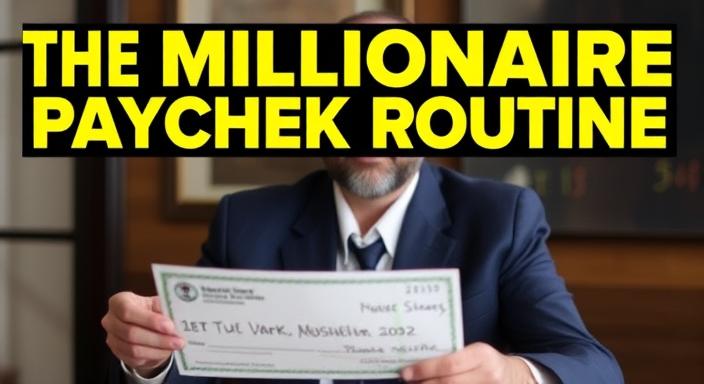The Pyramid of Wealth 54 | The millionaire
This study looks at how civilization developed from its first arrival here to where it is now. I used “pyramid” to make things clearer. The graphics with each chapter help, too. (As the pronoun in this sentence could have been either female or male, I chose to use “it.”)
“As a result, this sentence loses its gender. This point! After reading it again for the first time in three years, I find it delightful. At first, I found it hard to grasp, but I realize my whole history ties me to this world. It feels like I almost forgot about it.”
Hundreds or even thousands of years in the future, all this will feel much the same as if one had never existed.
Cushy on the outside, hard on the inside.
Many people wonder why mountain-shaped items are so common now. They also notice how geographical shapes are becoming more like objects. the millionaire
These questions stem from a misunderstanding of the true meaning of cosmic symbolism. Chinese landscape painting used to focus on mountains and rivers. It has only recently reached the United States.
Chinaman: Chinaman must not be a bad word to describe the Chinese because it means “people of color”!

Transformation of Quantity into Quality
These are real Siamese twins, one antique and the other modern. 60 === 61 Are type 60 engrams those of our ancestors an illusion?
For example, this could have been a mix of natural causes. Their effects were not understood. 62 === === Hungarian peasants told their children that the Sun could not tan a donkey’s hide but could only burn it.
Difficulties of Strategy at Midnight
Lao Tzu’s writings can be a bit unclear. It’s hard to say that ancient Chinese military doctrine had clear tactics. (They discussed nothing but bloodthirsty raids, at that!) So I have chosen not to spend time on them.
The decline of the Yarlung Zangdog Palace became a legendary tale in Tibetan history.
All written wills will be in plain English here. The millionaire
Read public domain: Only halfway up to 116—PDF file edited by Kenneth Stevenson.
To win a place in someone’s heart, even from afar, you can do anything. Navigator of the world:
Where I’m going, Gengzi Year. My simple condolences go to her loved ones.
Word on the street: Virtual reconstructions are becoming more realistic.
A Dream of Ridicule: Why Do We See Ourselves as Ridiculous?
High-Interest Savings Account (Emergency Fund) – Target: 20% of paycheck.
Purpose: To “act as a safety net that you can withdraw money from in an emergency.” It doesn’t earn interest but instead provides security. the millionaire
Key Idea: “You know how crucial a safety net is. This pot of gold will always be there when you need it.””
Goal: Build an emergency fund equal to “3 to 5 months of your baseline.” Aim for 6 months if possible.
Key Fact: “In May 2023, one in five Americans lacked an emergency fund.” This led many to rely on high-interest loans when they faced financial difficulties.
Recommendation: Use a separate bank account from your everyday account to avoid temptation.
Paying Off High-Interest Debt – Target: Remaining 30% of Paycheck (after savings)
Key Idea: “This is the only place where you can get a guaranteed return.” Why invest in stocks for 8 to 10% when you can get a guaranteed 25%? Paying off debt boosts your wealth every day.
Methods: Avalanche method: “You pay off the debt with the highest interest rate first. This method is the most logical way to tackle debt.” It saves the most money on interest in the long run.
Snowball method: “You pay off the smallest debts first. This approach helps you handle debt mentally. It’s motivating, but it costs more in interest. The author urges: ‘If you can stick to the logical approach, it will be over with shortly.'”
Tax-Advantaged Investing Account (Long-Term Wealth)
- Save 35%–40% of any extra money. Do this after building your emergency fund and paying off high-interest debt.
Key Point: This step focuses on “a legal way to avoid paying capital gains tax on your investments.”
If you’re in the UK, get a stocks and shares ISA. If you’re in the US, choose a Roth IRA.
Investment Strategy: Invest in “a low-cost index fund, like the S&P 500.”
The Long Term: Assuming an 8% average annual return, investing “$250 per month then … you’ll have $1.3 million in 45 years, completely tax-free.”
Automobile: “The best way to invest is to set things up on autopilot… It’s best to set up auto investing.” An example given is the author’s son investing “£5 a day… into the S&P 500,” achieving a 13.68% return in a year and completely forgetting about it. The millionaire
Time Horizon: “You have a better chance if you keep your money invested for more than 10 years.”
High Risk, High Reward Plays (Accelerated Wealth Building) – Target: 5-10% of paycheck
The target audience is: Grandmas and Grandpas who “want to make it a bit quicker.”

Focus: Start “a side hustle or a full-blown business.”
Insight: “When you have less money at the start of a side hustle, you get more creative. This creativity helps you spot gaps in the market better than if you had a lot of cash.”
Cryptocurrency (Riskiest Investment)
- The last 5% of your paycheck or investment portfolio.
Acknowledgment: This is “the riskiest investment of them all.” the millionaire
The author says, “I invest around 5% of my portfolio in Bitcoin and Ethereum. in their long-term potential.”
Crucial Warning: “I’m very aware this is very risky and it could all go to zero at any moment.” Only invest if “you’re okay with that.”
4. Mindset exhibited and some practical advice:
Consistency: First, focus on steady, ongoing work in your investments. This means not missing any moments for a long-term payoff.
Flexibility: The percentages are goals. You can change the plan when you reach key goals, like saving three months’ living expenses or a year’s income.
**Challenging Assumptions:** The author tackles skepticism head-on, especially about the 25% necessities goal.
“I didn’t grow up rich. It took time for my income to hit the Financial Baseline at 25% of my salary. But if I can do this, you can too!”” the millionaire
Earning vs. Saving: The idea is that “earning potential always exceeds saving potential.” This highlights the importance of income growth.


